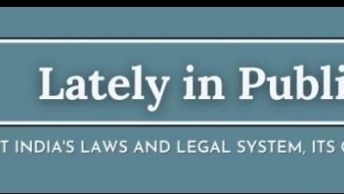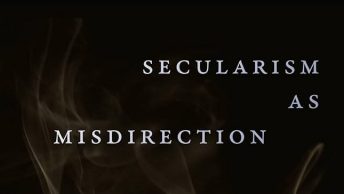While discussing the ongoing turmoil in Jammu and Kashmir, Rajeev Dhavan has advanced a specious suggestion to defuse it. According to him, the Government should approach the Supreme Court for an advisory opinion on this question: “Is it consistent with Indian secularism for the state to make land grants to religious endowments for religious purposes? If so, in what circumstances, in what manner and for what purposes and to what extent?”
Dhavan says: “The SC’s advisory jurisdiction has quelled many disputes including Berubari (1965), the UP crisis (1965) and the Babri Masjid dispute (1994). It is a safety valve”.
Dhavan admits that the transferred land is secular land of no religious significance, and that it was wrongly and surreptitiously transferred. The policy of providing land grants is ill-conceived, as it will have implications if this is available to all religious endowments elsewhere, he says.
One is tempted to agree with much of what Dhavan says about the non-merits of land transfer to the Amarnath Board in the first place which triggered the controversy. But having triggered it, should the Executive now wash its hands of, and ask the Judiciary to sort out the mess which it has created? It may be recalled that even in the Ayodhya reference case, the Supreme Court refused to answer the question referred to it by the President whether a Hindu temple existed at the disputed site. The question was returned respectfully unanswered. The executive may buy time, by making a Presidential reference under Article 143; but like the Ayodhya dispute, it will remain unresolved.






Along with the question that Mr Dhavan asks, should we also not ask the apex court: “Is it consistent with Indian secularism:
1. for the state to reserve a part of a public facility, i.e., airport, exclusively for a certain religion in the form of Haj terminals;
2. for the state to grant land to the Haj Committee of India to house its palatial building in Mumbai and for the state to grant land for Haj Houses;
3. for the state to grant huge subsidies and spend crores on first rate facilities for Haj pilgrims in India and in Jeddah?”
Is there any legal reason why the Haj pilgrimage should be treated differently from the Amarnath yatra? Also, just to be clear, the alleged “transfer” is nothing but a lease of otherwise uninhabitable land to the Shrine Board for the purpose of erecting temporary facilities for two months in a year on a dangerous pilgrimage route. Why the fuss?
‘”Is it consistent with Indian secularism for the state to make land grants to religious endowments for religious purposes?’
I think the question is not the right one.If a secular state can manage temples and properties endowed to them what is wrong in
granting some rights to put up non-permanent structures to a board that is under the control of the state government.There is no sale
or transfer of ownership in this case.It is done for the purpose
of providing facilities to pilgrims.
If this is not a secular act then
state has no business to manage
Hindu temples and charitable endowments and to appoint priests
in temples.Supreme Court is not the right body to answer such
questions.It is a policy matter
which the state should decide.
‘The executive may buy time, by making a Presidential reference under Article 143; but like the Ayodhya dispute, it will remain unresolved. ‘
Yes.
Jyotsna, Ravi,
It may be argued that the land grant is for the secular purpose of making provisions for visitors but a state government grant goes beyond merely administering it. Administering an institution is simply managing the assets that an institution already has, not to provide resources to it from outside. It is much like the CEO/Chairman of a corporation – they run the organization but they are not expected to donate anything towards its well-being out of their own pockets. The government’s actions here fall outside of that ambit.
If the roof of a temple is falling apart and needs a makeover and the government provides money for it, would that be secular because a roof by itself knows no religion? By that yardstick, barring the idol itself, pretty much everything else given to a temple might be said to be secular. Nevertheless, these will be assets being transferred to an avowed religious entity which will, under whatever guise (even if it is only a lease), control them. They will be used for a religious purpose and will therefore be of benefit only to followers of one faith. Would that constitute a secular endeavor?
Dhavan says that Indian secularism is about sarva dharma samabhav, not dharma nirapekshata. But the former unlike the latter guarantees only equal treatment of all faiths but no equality for those without a faith. Yet, he insists that this is superior to the separation of Church-State doctrine and calls it ‘celebratory neutrality’!